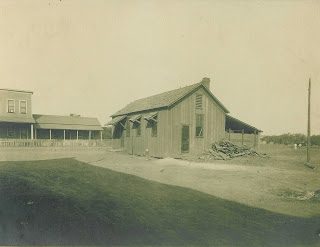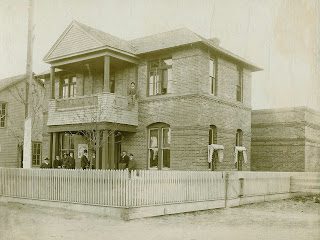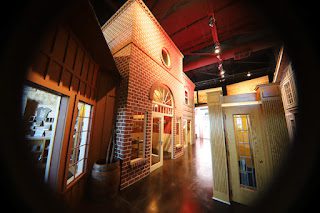Controlling the Climate

Controlling the Climate
by Lea Hart
People who live in Texas know that summer means heat. This was no different for the population of Thurber. According to the Global Historical Climatology Network, on July 1 of 1910 Dublin, Texas’s temperature was 90 degrees Fahrenheit with a low of 69. As of this moment, July 1, of 2020, Dublin’s temperatures are estimated to be 96 with a low of 74. While there are over 110 years difference between these two dates, there is a significant difference between how people stayed cool in these sweltering temperatures.
One of the main differences between dealing with heat in the present, and dealing with it in past, was the invention of air-conditioning. The earliest modern incarnation of the air conditioner was developed in 1902 by Willis Haviland Carrier. While ancient civilizations have used variations of evaporative coolers, commonly known today as swamp coolers, Carrier is the first person credited to build a coolant system for industrial purposes. His original purpose was not to cool workers in shops, but to decrease humidity for a printing business. Keeping workers comfortable just happened to be a nice side effect. In 1903, the first place to use Carrier’s new machine to cool its workers happened to be the New York Stock Exchange. The first air conditioner to be developed for homes (not just for the extraordinarily wealthy) was in the 1930s and employed the use of a 200 pound cabinet, and copious amounts of ice. This made device more of a hindrance than a help. While Thurber did have an Ice plant, the ice it produced was largely for cold boxcars that would run through Thurber, and local iceboxes. All of this to say, Thurberites were on their own for cooling themselves.
Without the modern convenience of air-conditioning, how did the Thurber population cope with the blistering heat? One way Thurberites kept cool was their clothing. The first synthetic fiber was produced in France in the mid 1800’s, formerly called artificial silk, it became known to be rayon. This fabric was not produced in the United States until 1911 and was primarily used as trimming (decorative bits sewn on to hems, sleeves, and collars) as it was not very breathable. It was the 1930’s before rayon gained popularity and was used for complete outfits. The 1930’s also led to the production of nylon, which became a staple in women’s fashion. Synthetic fibers are warmer than the natural fibers from which clothing used to be made. Cotton, linen and even wool is significantly more breathable than today’s Synthetic fibers and would have been worn by Thurber’s population.

Lorenz Collection
Another method of keeping cool for Thurberites was home construction. Historically, larger houses allowed heat to rise keeping the lower portions of houses cool. Thurber houses, while all similarly built, were made and owned by the Texas Pacific Coal and Oil Company. These homes had their widows placed across from one another in order to create cross breezes throughout the house. Other methods used to keep cool were awnings, which allowed for the windows to be opened in all types of weather. Larger cities did their best to accommodate those in apartment buildings with transom windows. These small windows were placed over the entry doors of apartments and would open to let in small breezes circulate. During some seasons, like summer in Texas, covered porches were slept on in order for the occupants of homes to keep cooler at night.

Lorenz Collection
While none of these suggestions sound half as comfortable as today’s central air and heat, there are still many cities, states, and countries that use older methods of keeping cool during their warmest seasons. During the heat wave that struck Europe in 2019 less than 5% of homes and businesses used central air conditioning. This number may not change much over time, as the use of AC is a significant cultural difference that leaves the United States standing alone in its demand. While the people of Thurber are no longer concerned about keeping cool during the Texas heat, those of who tell the story of Thurber are. You can experience this yourself at the W.K. Gordon Center for Texas Industrial History where the temperature is maintained at a steady 70-74 degrees year round.





